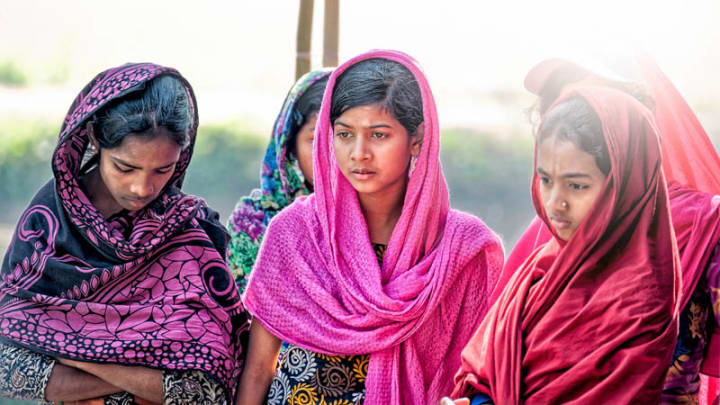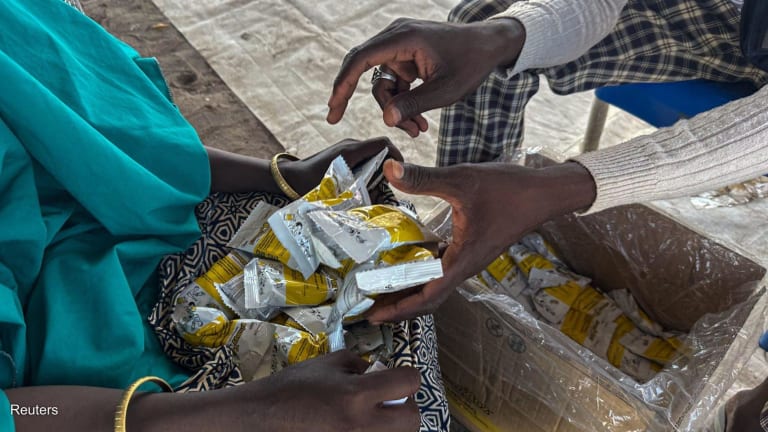
Ending child marriage could add billions of dollars to developing countries’ economies by slowing population growth, improving education and health outcomes for young girls and their children, reducing government budgets, and boosting women’s earning potential, according to new research.
Early marriage is linked to a range of negative social, health and education impacts for the girls themselves, and many of these are passed to their children, making it an intergenerational problem.
While the number of girls marrying under the age of 18 has decreased in recent years and abolishing child marriage is a target under the Sustainable Development Goals, progress to end the practice has stalled in many African and South Asian countries, where it is most prevalent. Niger, for example, where 77 percent of young women aged between 18 to 22 were child brides, has seen almost no reduction in the practice despite government commitments.
DevExplains: Do we need a new term for 'child marriage?'
More than 15 million girls each year are married before the age of 18. Widely known as "child marriage," some activists argue that the development community needs to find a new term to reframe our understanding of the issue. Devex explains.
The United Nations estimates that more than 700 million women were married before their 18th birthday, and that of those more than one-third married before they reached 15. Furthermore, unless firm action is taken, the total number of child brides is likely to rise due to demographic shifts in Africa, which the United Nations estimates will be home to most of the world’s under-18 population by 2050.
However, despite these facts, investment in ending child marriage remains limited. This is the impetus behind a new report — the Economic Impacts of Child Marriage — released on Tuesday by the World Bank and the International Center for Research on Women. The study offers new national and global estimates for the amount of money that could be saved by eliminating the harmful practice.
“Child marriage not only puts a stop to girls’ hopes and dreams. It also hampers efforts to end poverty and achieve economic growth and equity,” said Quentin Wodon, the World Bank’s project director and co-author of the report. “Ending this practice is not only the morally right thing to do but also the economically smart thing to do.”
For example, in Niger the annual welfare gains from stopping under-18 marriages could reach $1.7 billion by 2030, while the equivalent gains would be $4.8 billion in Ethiopia, and almost $1 billion in Nepal, according to the report.
This is based mainly on evidence that girls who marry at the age of 13 — when taken as a whole group — have on average 26 percent more children than those who marry at 18 or older, leading to larger populations and higher social welfare bills for governments, the report states.
Furthermore, at a global level, the study estimates that if child marriage had ended in 2015, $566 billion in purchasing power terms could have been added to the global economy by 2030.
Cumulatively, for the period from 2014 to 2030, welfare gains from ending child marriage could total more than $4 trillion.
However, while the report’s statistics offer an “excellent entry point for conversations with finance ministers” about the monetary costs of child marriage, according to Caren Grown, an economist and senior gender advisor at the World Bank, she is “very sceptical” about the global estimates in the report due to the inherent difficulties involved in translating the impacts of child marriage into costs.
However, the study’s finding do “provide more ammunition and evidence about the costs of gender equality writ large,” she said.
According to Grown, a broader range of studies are needed to look into the costs of child marriage, which include developed countries such as the United States, where early marriage is still practiced, as well as poor and fragile countries.
Another issues is the controversy surrounding the term “child marriage,” which some activists argue fails to adequately describe the issue and that using the term “marriage” and not “sexual abuse’” legitimizes the practice, as Devex reported.
Speaking at a panel in Washington, D.C., to launch the report, the authors also said that further analysis and country-specific reports will be published over the coming months.
See related stories:
▶ Opinion: Could the entertainment industry help end child marriage?
The new ICRW and World Bank study finds a financial correlation between early marriage, education and women’s earning power linked to the fact that girls who marry young tend to drop out of school earlier, according to Wodon. Women who marry as children earn on average 9 percent less than women who marry later in life, according to the report. In Nigeria this equals losses of $7.6 billion a year in lost earnings and productivity, the report finds.
Early marriage is also linked to higher instances of under-5 mortality and stunting, according to World Bank data, and thus a ban on child marriage could thus lead to estimated monetary benefits of $98 billion annually by 2030 associated with saved lives and children not being stunted, the report finds.
The report also estimates that improvements in land ownership, women’s participation and decision-making, as well as reductions in domestic violence — which would all accrue from ending child marriage — could also have smaller, but still significant, economic benefits for countries.
The findings on the economic costs will help open, and also widen, discussions about ending child marriage in developing countries, according to Lakshmi Sundaram, executive director of Girls Not Brides.
“When most people think about the cost of child marriage they think it is zero. But this report makes the case for the magnitude of the costs, it’s billions and trillions of dollars, and this can open up the discussion on why it’s important to have girls make decisions about their own lives,” she said.
This understanding of the wider issues at play will be crucial to ending the practice, Suzanne Petroni, ICRW’s project director and co-author of the report said, which requires a “multi-layered” approach.
“Poverty, gender inequality, poor access to quality education and to youth-friendly sexual and reproductive health services, and a lack of decent employment opportunities, help perpetuate child marriage and early childbirths,” she said.
But gender inequality is a defining factor, she added, since “we don’t see an equal number of girls and boys being married young,” and this is linked to prevailing view that women only have value as wives and mothers, Petroni said.
The ICRW director explained that poor families also often have a perception that marrying their daughters young is a safe option since they will be “protected” from sexual harassment and violence from other men. However, “child marriage itself is a form of violence,” which often enables “sexual violence to occur within the home,” she said.
The potential social and economic costs of child marriage are especially large since child brides and their children are liable to become trapped in a cycle of poverty. However, this intergenerational component could also be an advantage and a means of ending the practice within a generation, according to Sundaram, if a virtuous circle replaces a vicious one.
“It’s very encouraging that when girls are educated, their children tend to be better educated,” she said, and so if we follow the same logic, girls who marry later will also encourage their children to do the same. And so “we can see how it could be possible to break the chain of child marriage” she said.
Read more international development news online, and subscribe to The Development Newswire to receive the latest from the world’s leading donors and decision-makers — emailed to you free every business day.




